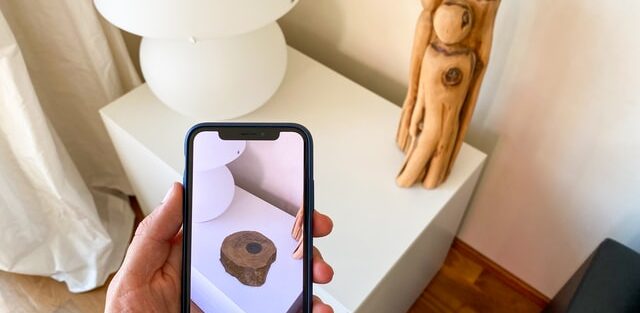Virtual stores, virtual shopping, endless aisles, personalized promos and content – augmented and virtual reality or AR/VR will make shopping more fun and efficient giving conventional retailers to change their way towards a contemporaneous way. As immersion marketing evolved, the blend of physical and digital, phygital retail is taking the best aspects from each space to create the optimal customer experience for a unique way of shopping against the traditional brick-and-mortar store, especially in times like this when the world is locked inside due to Coronavirus. AR/VR technology can help retailers benefit a lot by providing customers an uber-rich and comfy shopping experience on their fingertips.
Goldman Sachs reports that global market for AR and VR in retail will reach $ 1.6 billion by 2025.
Benefits of using AR and VR in Retail
AR and VR collectively helps the customers make better decisions while saving their time and avoiding long try-on and billing queues, enabling an immersive experience while shopping from the comfort of their home. Not only the customers, but AR and VR helps retailers reduce operating costs, showroom enhancement, product visualization and offering an engaging and personalized experience to consumers.
- At home shopping experiences: With the current social distancing norms in place, consumers are more and more reluctant to visit stores in person, and this is severely affecting retailers in nearly every industry. Even otherwise, people nowadays prefer to shop from the comfort of their homes for their daily grocery needs, clothes, eyewear and so much more. With AR technology, consumers can use their smartphones and see how a particular piece of furniture or décor item might look like in their homes or on their tables or walls. They can even get a visualization of how a dress or shoe look like on them.
Ikea came up with the Ikea Place ARKit app, which allows users a 3D-preview of the chosen furniture at the desired spot in their homes/offices.
- Improvised customer engagement: AR/VR takes customer engagement to a whole new level by providing customers with virtual tours of the store from the comfort of their homes. It provide consumers with detailed information and directions to the stores from different entrances or with in-door maps by reducing the time to find items/sections in the store. It can also provide try-on features to chatbot to connect with a sales representative.
- Creating virtual experiences: Many a times, visiting number of shopping stores to buy a desired car becomes tiring and confrontational. It takes a knowledgeable person to talk them through all the features like entertainment systems, navigation services, automated parking and more. VR can provide a solution by giving the consumers the same experience without having to visit a store by enabling experiences virtually. In future, car buyers can have a retail experience by zooming in on tiny details such as the stitching, turning on and hearing the engine, opening the doors and hood, and taking a virtual test drive in a backdrop of their choice.
According to a McKinsey study, the average car buyer today visits 1.6 auto dealerships, down from five dealerships 10 years ago.
- Personalized marketing opportunities: Retailers already know and use personalized and targeted marketing. With AR/VR, they can provide their customers with a 3D graphic-rich content instead of a simple 2D banner. It helps retailers offer curated options to its customers by gaining a much detailed view of the customers’ preferences through personalized marketing.
- Customer Retention: For retailers, a happy customer is a returning customer. As much it is important to attract a customer, it is absolutely vital to retain an existing customer. With the personalized services provided by AR and VR technologies, the chances of consumer return rate is very high while product returns are low. Delivering a great experience has now become a top strategic priority for most businesses and ranks only third after price and quality. This demand is fueling and accelerating the growth of AR/VR in retail industries.
- Employee training: This is an important as well as a complicate process for retailers. The use of AR and VR in retail can minimize the risk involved in the training procedure. It helps retailers to train employees by simulating real-life environments and situations such as taking new employees on a store tour or helping customers find the desired section to buy easily.
A WSJ article mentions, Walmart adopted VR to help identify employees for management positions.
Major retailers across various sectors have already begun reaping the benefits of AR and VR technologies. In conclusion, retailers can use this technology to fundamentally change the way consumers shop, increasing customer delight by providing on-demand products, offers or discounts and cashback and efficiency to drive sales and maximize ROI.
Read more about our offerings in AR/VR or the latest trends in AR/VR.



